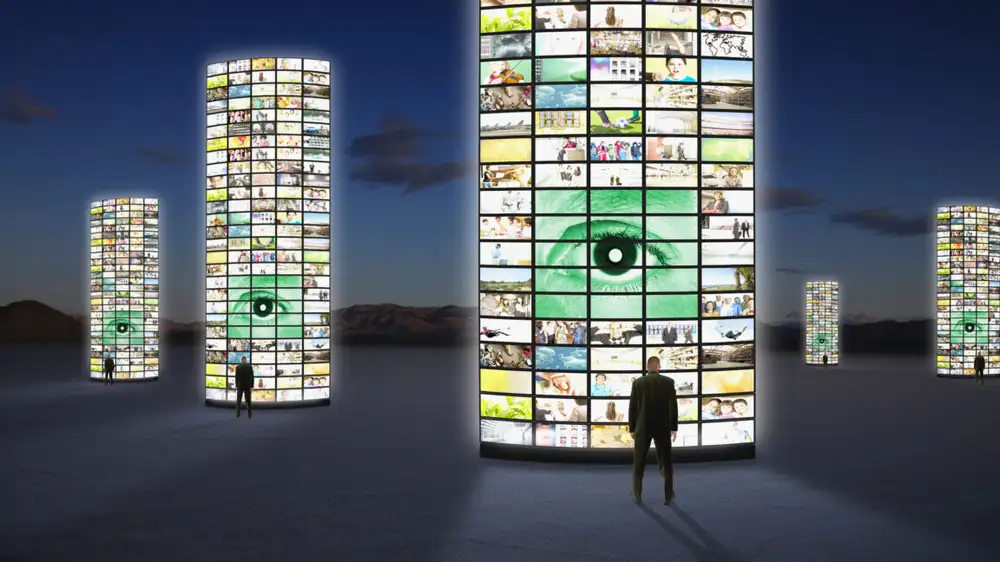DENVER—Most smart TV operating system (OS) owners are in the ad sales business now. Software providers for budget and premium TVs are honing their ad skills, which requires advancing their ability to collect user data. This is creating an “inherent conflict” within the industry, Takashi Nakano, VP of content and programming at Samsung TV Plus, said at the StreamTV Show in Denver last week.
During a panel at StreamTV Insider’s conference entitled “CTV OS Leader Roundtable: From Drivers to Engagement and Content Strategy,” Nakano acknowledged the opposing needs of advertisers and smart TV users, who are calling for a reasonable amount of data privacy.
“Do you want your data sold out there and everyone to know exactly what you’ve been watching … the answer is generally no,” the Samsung executive said. “Yet, advertisers want all of this data. They wanna know exactly what you ate for breakfast."
Nakano also suggested that the owners of OSes targeting smart TVs and other streaming hardware, like streaming sticks, are inundated with user data that may not actually be that useful or imperative to collect:
I think that there's inherent conflict in the ad ecosystem supplying so much data. … We're fortunate to have all that data, but we're also like, ‘Do we really want to give it all, and hand it all out?’ There's a constant conflict around that, right? So how do we create an ecosystem where we can serve ads that are pretty good? Maybe it's not perfect ...
Today, connected TV (CTV) OSes are largely built around not just gathering user data, but also creating ways to collect new types of information about viewers in order to deliver more relevant, impactful ads. LG, for example, recently announced that its smart TV OS, webOS, will use a new AI model that informs ad placement based on viewers’ emotions and personal beliefs.
However, at a certain point, OS operators may be gathering more data than is truly helpful, which crosses viewers’ boundaries. Nakano said:
I think we have to get comfortable between the advertiser, the operating system, and the systems in between to create more efficiencies. Because I do think it’s broken. I do think that there's so many different hops that these requests go through that aren't likely necessary and that they're a byproduct of inefficiencies that we try to patch.
The executive added that he thinks the industry needs to "look at our ad ecosystem holistically and say, 'Okay, how can we make this work?'" because knowing everything about a particular streaming user is "not realistic."
Spotlight on software
The ability for streaming OSes to generate revenue is increasingly important to TV and streaming hardware makers such as Samsung, Amazon, LG, Roku, Vizio, and Walmart, which struggle with low margins and growing unit sales and seek more reliable growth from software’s ability to advertise to and track users.
In a forecast shared this month, WPP Media (formerly GroupM) predicted that streaming TV will represent about 27 percent of TV advertising revenue in 2025 at $41.8 billion. The world’s biggest media investment firm expects streaming ad revenue to reach $71.9 billion by 2030. In January, research firm eMarketer predicted that CTV display ad spend would reach $33.35 billion this year and show double-digit annual growth rates to reach $46.89 billion in 2028. That gives OS operators a strong incentive to build software that can extract useful data from viewers and determine the types of ads that viewers will pay attention to.
However, viewers aren’t demonstrating as much focus on the software of their streaming hardware. TV brands that Ars has spoken with have frequently pointed to picture quality and price as the top considerations for users. During the StreamTV Show panel, Nakano pointed to brand and picture quality as the top factors for people. He noted, however, that those “who buy Samsung TVs generally use the operating system, and that's how they navigate through the UI.”
Katherine Pond, Vizio’s group VP of platform content and partnerships, noted during the panel that once someone buys a TV, OS operators are “not really in competition anymore.” However, OEMs still try to ensure that customers use their OSes, so that viewers are engaged for ads and potentially buy more devices from that brand.
“You have to create a fitting, and you create a fitting by getting people into content that they love as soon as they can, or helping with discovery [and] helping search,” Jennifer Vaux, VP of content acquisition and programming at Roku Media, said during the panel.
As TVs progress toward a battle of data, ads, and tracking over hardware sales and panel advancements, TV brands are largely invested in driving OSes that can serve advertisers’ needs. But there’s also a demand for navigable OSes that help users maximize their TV’s usage and find content they’ll enjoy. Here, we see another conflict facing TV OS owners. However, without ensuring that TV OSes serve users as well as they serve corporations, viewers are likely to replace their hardware’s software with slicker alternatives, like an Apple TV box.

 Here are the 24 US AI startups that have raised $100M or more in 2025
Here are the 24 US AI startups that have raised $100M or more in 2025